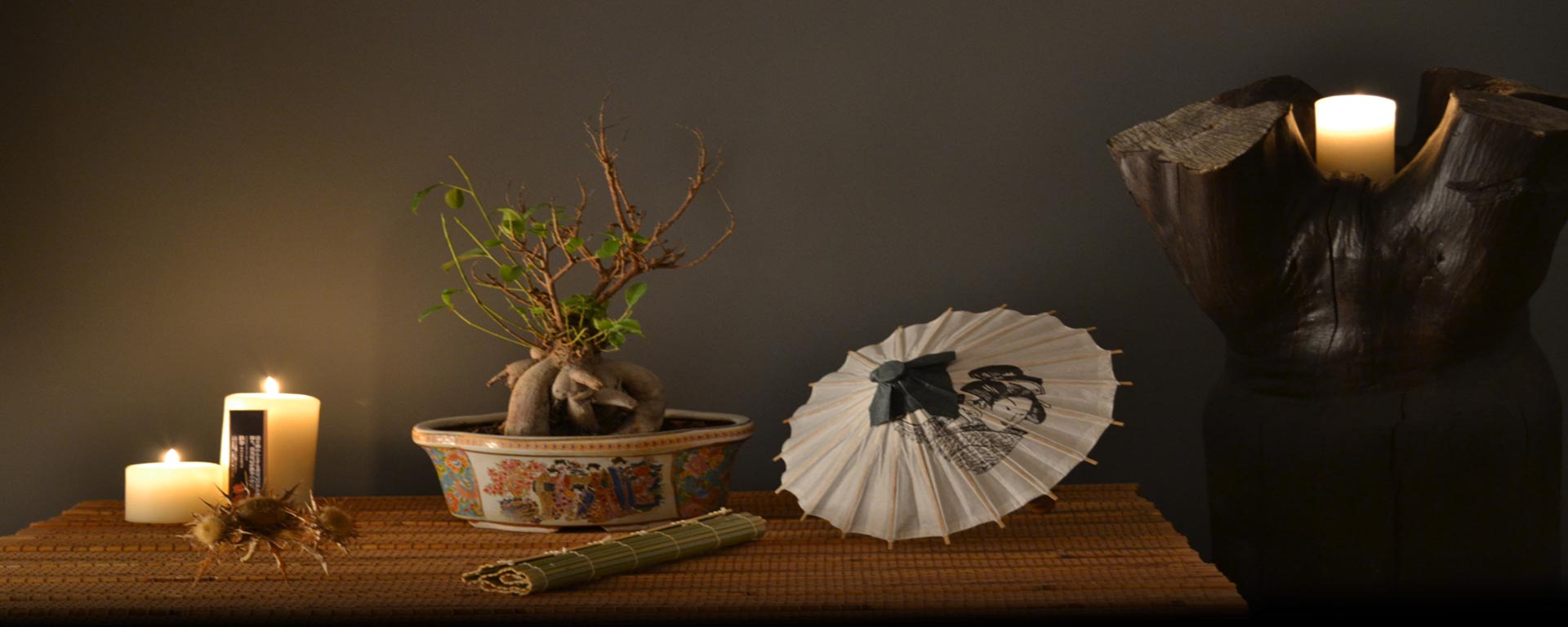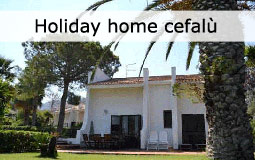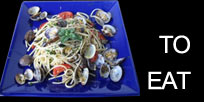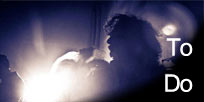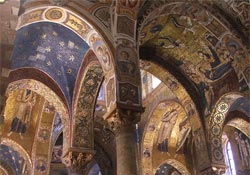
![]()
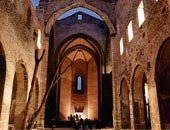
![]()
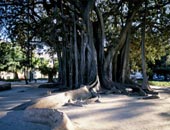 Moreover, it’s possible to reach the most important museums of the city by feet: 5 min. from Palazzo Abatellis (15th Century), base of the Regional Picture Gallery, where it’s possible to enjoy the enchanting “Annunziata” by Antonello da Messina; 5 min. from the International Museum of Marionette (instituted in 1975); the museums of Palazzo Mirto (14th – 17th Century), the fascinating Piazza Magione and the suggestive Piazza Marina (19th Century) with its majestic monumental trees and its Sunday antique street market; Palazzo Chiaramonte-Steri (14th Century), extraordinary example of Medieval architecture, which still keeps the graffiti of heretical prisoner of the Saint Inquisition; the Gallery of Modern Art in the historical complex of Sant’Anna alla Misericordia (15th – 17th Century).
Moreover, it’s possible to reach the most important museums of the city by feet: 5 min. from Palazzo Abatellis (15th Century), base of the Regional Picture Gallery, where it’s possible to enjoy the enchanting “Annunziata” by Antonello da Messina; 5 min. from the International Museum of Marionette (instituted in 1975); the museums of Palazzo Mirto (14th – 17th Century), the fascinating Piazza Magione and the suggestive Piazza Marina (19th Century) with its majestic monumental trees and its Sunday antique street market; Palazzo Chiaramonte-Steri (14th Century), extraordinary example of Medieval architecture, which still keeps the graffiti of heretical prisoner of the Saint Inquisition; the Gallery of Modern Art in the historical complex of Sant’Anna alla Misericordia (15th – 17th Century).
![]()
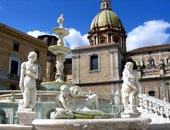 A short walk through via Alloro, with its palaces -many of which have been restructured and reached their original splendor- to admire the Church of San Francesco (1260). You can go across the historical market of Vucciria and the background of Piazza San Domenico (15th – 18th Century) to reach the Archeological Museum Antonio Salinas, inside the historical complex Olivella (1769). From there you can walk through the vivacious via Bara all’Olivella, where there is the Theatre of Puppets, till you arrive to the Theatre Massimo (1897), classical example of art nouveau and one of the most beautiful theatres in the world. Behind it, there is Porta Carini (1310) and the picturesque Historical Market Capo where u can find the fascinating Church Immacolata Concezione (1612). Coming back to the principal way, you can easily reach the Quattro Canti, the heart of the historical centre of the city, where there are the Baroque churches San Giuseppe dei Teatini (1645) and Santa Caterina (1566) with their “multicoloured inlaid marbles”, the Fountain Pretoria (1554) in front of Palazzo Pretorio (1300-1875), today seat of the town hall. Behind it there are the Norman churches San Cataldo (1154) surmounted by the big, beautiful tambour domes made in Arab style and the Church Martorana (1143) with its wonderful mosaics.
A short walk through via Alloro, with its palaces -many of which have been restructured and reached their original splendor- to admire the Church of San Francesco (1260). You can go across the historical market of Vucciria and the background of Piazza San Domenico (15th – 18th Century) to reach the Archeological Museum Antonio Salinas, inside the historical complex Olivella (1769). From there you can walk through the vivacious via Bara all’Olivella, where there is the Theatre of Puppets, till you arrive to the Theatre Massimo (1897), classical example of art nouveau and one of the most beautiful theatres in the world. Behind it, there is Porta Carini (1310) and the picturesque Historical Market Capo where u can find the fascinating Church Immacolata Concezione (1612). Coming back to the principal way, you can easily reach the Quattro Canti, the heart of the historical centre of the city, where there are the Baroque churches San Giuseppe dei Teatini (1645) and Santa Caterina (1566) with their “multicoloured inlaid marbles”, the Fountain Pretoria (1554) in front of Palazzo Pretorio (1300-1875), today seat of the town hall. Behind it there are the Norman churches San Cataldo (1154) surmounted by the big, beautiful tambour domes made in Arab style and the Church Martorana (1143) with its wonderful mosaics.
![]()
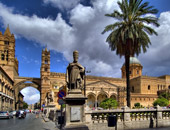 From the Quattro Canti, through corso Vittorio Emanuele you can quickly reach Palazzo Riso (1784), today base of the Contemporary Art Museum; the splendid Church San Salvatore (1072); the Cathedral (1170), where there is the tomb of Federico II; the Archiepiscopal Palace (1460) with the Diocesan Museum. Passing Porta Nuova (1583) you can admire the opulent Palazzo dei Normanni (1072), where there is the superb Capella Palatina (1130-40) with its breathtaking mosaics. After a visit to the church of di San Giovanni degli Eremiti (1132), beautiful example of Arab-Norman architecture, you can continue your walking through the quarter of Albergheria and the vivacious Market Ballarò, where you can appreciate the baroque church Casa Professa, and then come easily back to Casa500g just crossing Piazza Bellini and via Alloro.
From the Quattro Canti, through corso Vittorio Emanuele you can quickly reach Palazzo Riso (1784), today base of the Contemporary Art Museum; the splendid Church San Salvatore (1072); the Cathedral (1170), where there is the tomb of Federico II; the Archiepiscopal Palace (1460) with the Diocesan Museum. Passing Porta Nuova (1583) you can admire the opulent Palazzo dei Normanni (1072), where there is the superb Capella Palatina (1130-40) with its breathtaking mosaics. After a visit to the church of di San Giovanni degli Eremiti (1132), beautiful example of Arab-Norman architecture, you can continue your walking through the quarter of Albergheria and the vivacious Market Ballarò, where you can appreciate the baroque church Casa Professa, and then come easily back to Casa500g just crossing Piazza Bellini and via Alloro.
![]()
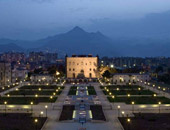 Out of the historical city centre, you should not miss a visit to the Convento dei Cappuccini (16th Century) with its catacombs; the Castle of Zisa (1166) where there is an interesting museum of Islamic art; the fascinating Cathedral of Monreale (1174) with its astonishing golden mosaics; La Cuba (1180), another delightful example of Arab-Byzantine architecture; the Sanctuary of Santa Rosalia (17th Century) inside of a rock ravine on the top of Monte Pellegrino, where the relics of the Patron Saint of Palermo are kept.
Out of the historical city centre, you should not miss a visit to the Convento dei Cappuccini (16th Century) with its catacombs; the Castle of Zisa (1166) where there is an interesting museum of Islamic art; the fascinating Cathedral of Monreale (1174) with its astonishing golden mosaics; La Cuba (1180), another delightful example of Arab-Byzantine architecture; the Sanctuary of Santa Rosalia (17th Century) inside of a rock ravine on the top of Monte Pellegrino, where the relics of the Patron Saint of Palermo are kept.
